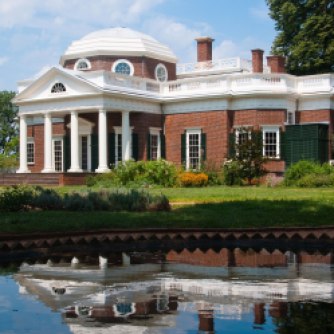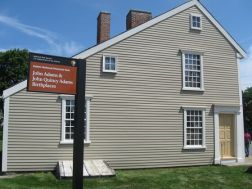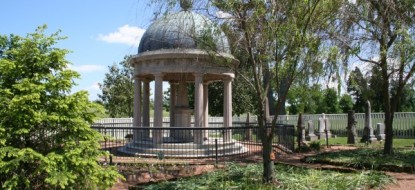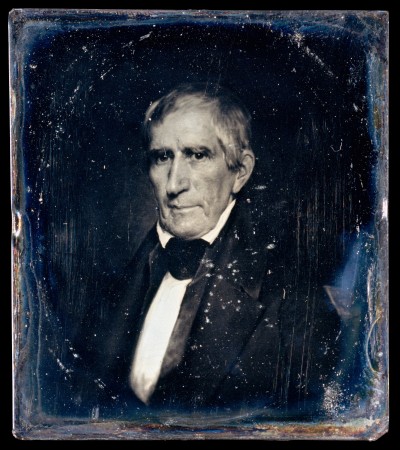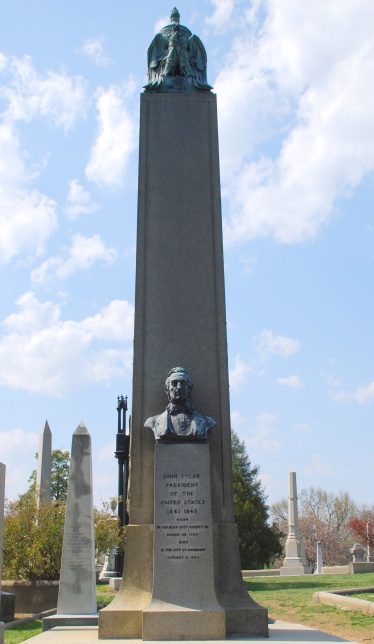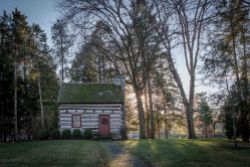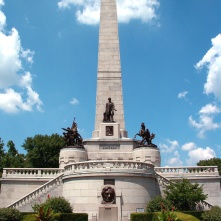“Great men are the ambassadors of Providence sent to reveal to their fellow men their unknown selves. To them is granted the power to call forth the best there is in those who come under their influence…No man was ever meanly born. About his cradle is the wondrous miracle of life. He may descend into the depths, he may live in infamy and perish miserably, but he is born great. Men build monuments above the graves of their heroes to mark the end of a great life, but women seek out the birthplace and build a shrine, not where a great life had its ending but where it had its beginning, seeking with a truer instinct the common source of things not in that which is gone forever but in that which they know will again be manifest. Life may depart, but the source of life is constant” — Calvin Coolidge, Women’s Roosevelt Memorial Association, New York, January 23, 1921
George Washington
- Born February 22, 1732, at Wakefield on Pope’s Creek Farm, Westmoreland County, Virginia.
- Wakefield, begun prior to 1718 by his great-grandfather John Washington, was (like many homes) added on to over the years until it became the ten-room “ancient mansion seat” of Washington’s memory. It burned down on Christmas Day in 1779 and was never rebuilt. The foundation markers can still be seen a short distance from the standing structures today. The farm on Popes Creek near the salt marshes of Westmoreland County was also the ancestral burying ground for the earliest Washingtons in America.
- George Washington died December 14, 1799, at Mount Vernon, Virginia, where the family’s mausoleum can be visited today.
John Adams
- Born October 30, 1735, at the modest clapboard house of Deacon John Adams (1692-1761) in Braintree (now Quincy), Massachusetts.
- The original house built by Joseph Penniman in 1681 was purchased with six acres surrounding it by Deacon John in 1720 who, apparently, built a new home on the site in 1720. The President’s brother, Peter, inherited the farmhouse upon their father’s death but in 1774, John and Abigail purchased it from Peter and rented the residence out during the Revolutionary War, living in a house next door. The house was given to John Quincy Adams by his parents in 1803 and passed down through the family until the next century, when it was sold to the city of Quincy.
- John Adams died July 4, 1826, at Peacefield (dating back to 1731), the property he purchased in 1787 while still in Great Britain, which the family moved into the following year. John and Abigail have moved from their original site of rest in Hancock Cemetery (in Quincy, across the street from the United First Parish Church) to be interred within the basement crypt of the the Church.
Thomas Jefferson
- Born April 17, 1743, at Shadwell, Albemarle County, Virginia.
- The Shadwell property originally belonged to his father, Peter, who, reportedly won it over a bowl of punch. Thomas inherited the property in 1764 and considered this his home until the residence burned in 1770, destroying with it many of his papers and nearly all his books up to that time. A home would be rebuilt on the site but he would not again live there.
- By 1768-69, he was already at work clearing the hilltop and manufacturing the first bricks that would go into Monticello. He would marry Martha Skelton in 1772 and she would join him in the completed South Pavilion portion of the famous residence until her untimely death in 1782.
- Thomas Jefferson died forty-four years later on July 4, 1826 at Monticello, Albermarle County, Virginia, the residence he had designed, constructed, reworked and finished over the process of 40 years. A replica of Jefferson’s tomb marker rests below Monticello. The original obelisk, now restored after extensive chipping by souvenir hunters, resides on the campus of the University of Missouri in Columbia. The original marble epitaph is also on the University grounds at Jesse Hall.
James Madison
- Born March 16, 1751, in Belle Grove (Port Conway) along the Rappahannock River, Westmoreland County, Virginia.
- The home, which no longer stands, was house in which the President’s mother, Nelly, grew up. Surrounded by a plethora of extended family, Nelly made the journey to her mother and stepfather’s home to give birth to her firstborn baby. While a historical marker identifies the site, a plantation house was built there in 1790 which now serves as a Bed & Breakfast. While young James likely spent a good many hours at the ancestral home at Port Conway, it was his father’s project further inland overlooking the mountains, Montpelier (Mount Pleasant), that would become his home.
- Madison’s father, James Sr., completed the main house in 1764. Young James, as a teenager, recalled moving furniture to the new place. With his father’s death in 1801, he inherited the home. It acquired a grander presence under James Jr.’s oversight, who added wings on either side and expanded Montpelier in two basic stages: (1) 1797-1800, while serving as a powerful Congressman yet just newlywed to Dolley Madison; and (2) 1809-1812, while serving as President and First Lady. His mother enjoyed the residence from her own side of the expanding house and received her guests from there.
- James Madison died June 28, 1836 at Montpelier, Orange County, Virginia. He is buried on the family plot joined, at last, by his wife Dolley, who was initially interred in Washington, D. C., where she moved following the President passing, upon her death in 1849. Montpelier was sold by Dolley due to debts but, like Jefferson’s Monticello, was rescued by the generosity and concern of private citizens (the DuPont family in the former case and Uriah Levy in the latter).
James Monroe
- Born April 28, 1758, in Westmoreland County, Virginia.
- The family estate, just five miles from the Washington family’s holdings, had been held for nearly a century when the future President arrived. Monroe would not remain on the family’s land, however, but leave Westmoreland County and make his own way. It was Andrew Monroe who first arrived in America from Scotland in 1650, after reportedly serving as a Cavalier during the English Civil War. The future President seems to have walked away from his Tidewater roots and never looked back. As such the presence of the family home and land they once held is now erased by time. A replica of the kind of house homesteaders like the Monroes would have known is underway near the birthplace of the fifth President.
- His home at Leesburg, dubbed Oak Hill, would keep him close to his friends, Jefferson and Madison at Charlottesville, for a time. But he would be forced to give it up with his wife’s death in 1830 and move to New York City, staying with one a daughter until his death the next year.
- James Monroe died on July 4, 1831 in New York City. After original internment in that city’s Marble Cemetery, he was relocated in 1856 to his final resting place above the James River in Richmond’s Hollywood Cemetery just before war broke out between the States. Protecting the simple granite sarcophagus is an ornate Gothic-style cast iron cover of stunning detail, wrought by German immigrant Albert Lybrock and installed in 1859.
John Quincy Adams
- Born July 11, 1767, in the Penn’s Hill cottage at Braintree (now Quincy) inherited in 1761 by his father John from John Quincy’s grandfather, Deacon John.
- Family legend declares that Abigail personally scrubbed the stones on the floor of the room in which he was born — the day before his arrival. His father’s birthplace is merely 75 feet away. It was from this house that Abigail wrote some of her best known letters to John, who also drafted the 1780 Massachusetts Constitution in his office in the northeast corner of the residence. John Quincy would return here and live for a short time with his own family and then rent out the property, passing it down to descendants until being given to the city of Quincy in the 1940s.
- John Quincy Adams died on February 23, 1848 two days after collapsing on the floor of the U.S. Capitol in Washington, D. C., while serving as a U. S. Representative. Like his parents, however, he was relocated with his wife Louisa from Hancock cemetery to the basement crypt of the United First Parish Church in Quincy.
Andrew Jackson
- Born March 15, 1767, in the Waxhaws region close to the border between North and South Carolina. Still very unsettled country, the exact site of his birth remains a bit of a mystery. He believed he was born on the South Carolina side while an aunt, present the day he was born, claimed the North Carolina side. The Scotch-Irish Jacksons, like many a frontier family, had to work hard just to stay alive. His father, would in fact die weeks after young Andrew’s birth.
- Chosen by Jackson’s wife Rachel, the site on which their famous home in Davidson County, Tennessee, is located began with the upgrade after 1819 from log cabin to an eight-room two-story Federal style home. After the unexpected death of Rachel in 1828, he placed her tomb in the garden she loved. Commissioning David Morrison to design their limestone tomb and rework the residence in 1831, Jackson invested constant care in the layout and landscaping of the space around her. The residence would be enhanced with a columned portico, single story wings and, in 1831, receive the Greek Revival reconstruction that now finishes it. The iconic entrance portico concealed the more modest materials behind it — simple brick and mortar construction with slanted tin roofing. Appealing to the grander imagery of Virginia’s Presidential homes, Jackson’s Hermitage gives us Tennessee hospitality with frontier simplicity.
- Andrew Jackson died on June 8, 1845 at The Hermitage, in what was still rural country outside Nashville, Tennessee. This residence becomes, in a sense, the frontier equivalent of Mount Vernon. They are buried together in what was Rachel’s garden.
Martin Van Buren
- Born December 5, 1782, in Kinderhook, New York, he was the first President born under the independent United States of America. Born to Dutch homesteaders along the Hudson, in a village right out of Washington Irving’s prose, Maarten helped operate his father’s taproom and sell the family produce. Never quite shedding his Dutch accent, English would remain his second language.
- Like other Presidents before and since, Van Buren would return to the people from whom he came, coming back to Kinderhook after his term of office completed. He would acquire Lindenwald in 1839, while still in Washington. Named for the line of American Linden trees that still frame the residence, Lindenwald would become his permanent haven in retirement. He not only befriended Washington Irving but the author would apparently compose a substantial portion of his History of New York while a guest at Lindenwald. The only President to live during both the Revolution and the American Civil War, Van Buren would be not only the central catalyst behind Andrew Jackson’s political coalition, the Democrats, but also an advocate for the abolition of slavery and sharp critic of President Lincoln in the last years of his life.
- Martin Van Buren died July 24, 1862 at Lindenwald, his home in Kinderhook. He is buried beside his wife Hannah, both located among their fellow townspeople in the Kinderhook Reformed Church Cemetery.
William Henry Harrison
- Born on February 9, 1773, at Berkeley, the Harrison family’s ancestral home in Charles City County, Virginia.
- Built in 1726, the house was also the birthplace of Benjamin Harrison V, not William Henry’s grandson but the ninth President’s father and a signer of the Declaration. Berkeley would be targeted by Benedict Arnold’s troops and later occupied by soldiers under General McClellan’s command. Cementing Berkeley’s legacy as a place well acquainted with martial history, General Daniel Butterfield composed “Taps” while at the plantation.
- William Henry Harrison died April 4, 1841 at the White House, the first President to die in office. In the solemn procession that followed, barges covered in black crepe brought the President’s body down the Ohio River to his requested resting place on Mt. Nebo in North Bend, Ohio, affording views not only of his adopted state but also Indiana and Kentucky. There he remains beside his wife Anna and other members of the Harrison family who ventured, like he did, into the west.
John Tyler
- Born March 29, 1790, at Greenway in Charles City County, Virginia, seventeen years after the birth of his neighbor and running mate William Henry Harrison. A modest story and a half structure, Greenway was built in 1776 by the President’s father, Judge John Tyler Sr., and still stands today. Sold by the President in 1829, who then relocated nearby to Sherwood Forest, it remains in private hands. Interestingly, the house was originally known as Walnut Grove when bought by, of all people, the future President William Henry Harrison, the year Tyler was born. Harrison never lived in the house, however, and sold it again after three years.
- Tyler’s move from Greenway to Sherwood Forest by 1842, so named to designate his status as an “outlaw” (like Robin Hood) in the eyes of the establishment Whig party, provided an way to deliver a parting shot to his political opponents. Tyler improved a number of the components of the home during his long retirement, even constructing and installing the storm windows found there during restoration work in the 1970s. Long the home of Tyler’s many children and grandchildren, it remains open to visitors.
- John Tyler died January 18, 1862 in Richmond, Virginia, taken ill following his role in the failed peace commission, vote for Virginia’s secession, and before he could take up the seat to which he had been elected in the Confederate Congress. Lionized by President Davis as a hero of the Confederate States, Tyler was interred with the Confederate states flag in place of a United States flag, the only President so accorded. His body rests near the marker of President Monroe in Richmond’s Hollywood Cemetery.
James Knox Polk
- Born November 2, 1795 in Pineville, Mecklenburg County, North Carolina. The log cabin, built in the early 1790s long ago vanished with the property once worked by Samuel and Jane Polk alongside their children but a careful reconstruction in 1967 according to eyewitness descriptions, with cabin materials and contemporary techniques has restored a structure to the area where President Polk was born.
- By 1816, Samuel had moved the family to Columbia in a brick house he had built for them while the President was away at college. Polk would live there until his marriage to Sarah Childress in 1824. The house in Columbia to which they moved and spent most of their life together long ago burned down and is now commercial property.
- James Knox Polk died June 15, 1849 at Polk Place, Nashville, Tennessee. Bought in 1847 but still under reconstruction when the former President died of cholera, Mrs. Polk continued to live in the mansion until her death in 1891. Revered by both sides during the War between the States, Polk Place remained untouched by the fighting. Not until Mrs. Polk’s death was the property’s future jeopardized and, sadly, it was demolished in 1901 and is now the site of the Capitol Hotel in Nashville. The Polk’s great niece, Sallie Fall, would salvage everything that was saved from the loss and helped ensure the preservation of the Polk home at Columbia.
- Polk’s tomb has likewise been the subject of controversy. Buried originally on the lawn of his residence at Polk Place, Polk’s remains would be relocated in 1909 to the grounds of the state capitol in Nashville. Only in recent years has the effort to bring the tombs of the President and First Lady to rest at the Polk home in Columbia finally, it seems, achieved the legislature’s support.
Zachary Taylor
- Born November 24, 1784, at Montebello in Orange County, Virginia. The large Taylor family, en route to destinations in Kentucky and, perhaps, further west stopped here to rest and restore the health of ailing members when little Zachary was born. An inconspicuous log cabin or temporary structure was the shelter that first welcomed the future President into the world. Nothing now remains but a historical marker of the approximate location. Taylor, a relative of the Madisons of Orange County, would go on with the rest of his father’s family to settle at Springfield just east of Louisville, Kentucky.
- Died July 9, 1850, at the Executive Mansion, Washington, D. C. Placed temporarily in the vaults of the Congressional Cemetery, President Taylor’s body was brought to the family burial grounds at Springfield outside Louisville. In 1926, the remains of both he and his wife were removed a short distance away and again interred in a mausoleum constructed at a national cemetery named for him.
Millard Fillmore
- Born January 7, 1800 in Cayuga County, New York. Nothing marks the site where the log cabin once stood in which Millard Fillmore was born except, perhaps fittingly, a picnic pavilion and historical marker at Summer Hill above Moravia. A replica like the Fillmore’s log cabin can be explored down the hill within Moravia, however. The single extant house, a charming little home, built by Fillmore in 1826 stands in East Aurora, New York. Here the President’s son Powers was born before the family moved on to Buffalo. But, rescued from oblivion by artist Margaret Price, the wife of Irving Price of Fisher-Price Toys, in 1930. It now houses Fillmore family mementos and memorabilia from their early years, life in Buffalo, and the Presidency.
- Millard Fillmore died March 8, 1874 in his sprawling mansion dominating Niagara Square, Buffalo, New York. He had begun life intensely impoverished but had reached the very heights of national leadership by his determination to pull himself up from that squalid beginning…to learn, to educate himself, and thus be of service to those around him. He is buried alongside his family in the unassuming Forest Lawn Cemetery in Buffalo, marked by an unadorned obelisk.
- Like Grover Cleveland after him, Fillmore would come to Buffalo and thrive in public service. Unlike Cleveland, however, Fillmore would return to Buffalo and give back freely and abundantly to the cultural and economic institutions of the city. He founded the University of Buffalo and contributed in many more unseen ways to the betterment of his adopted hometown. Yet, his residence became a series of hotels following his death. Only a plaque on the wall of Statler Hotel, where his home once stood, commemorates his existence today. Regrettably, there is little sign of his immense heart for the people of Buffalo and little evidence of his incredible civic generosity. He lives, however, in what he gave not in what he received.
Franklin Pierce
- Born November 23, 1804, born in Hillsboro, New Hampshire. Apparently born in a log cabin over what would become Lake Pierce put up to shelter the family while a permanent home was completed that same year by the President’s father, Benjamin, a veteran of the Revolutionary War, Pierce lived in his father’s homestead until 1834, when he married Jane Appleton. While in college, he would meet and begin a lifelong friendship with Nathaniel Hawthorne, whose family he took care of in his will.
- The residence would stay in the family until 1925, when it was given to the state of New Hampshire. The future President and his wife would move on, however, to Concord, where he would set up his law practice and begin his rise as an ambitious, engaged Jacksonian Democrat. The Presidency would test the very limits of the talents that brought him to office.
- Franklin Pierce died October 8, 1869, in Concord, New Hampshire of advanced cirrhosis. After the loss of his wife and already deprived of their three sons, he passed alone without family and was buried beside Jane and two of his boys at Old North Cemetery in Concord.
James Buchanan
- Born April 23, 1791 in a log cabin near Cove Gap, Pennsylvania. A replica of the cabin has been relocated to Mercersburg, where the James Sr. mover his family to begin farming there soon after James Jr.’s birth. They soon moved into town and found success there. Buchanan would go on to become one of the most credentialed candidates for the Presidency in 1856. He had just about done it all: U. S. Representative, Chairman of the House Judiciary Committee, U. S. Senator, diplomat to Russia and Great Britain, Secretary of State and, in the end, President. By virtue of his resume and connections, he had all the signs of sure success.
- James Buchanan died June 1, 1868, at his home, Wheatland, near Lancaster, Pennsylvania. Built in 1828, Wheatland passed to Buchanan in 1848 and thenceforth became his landing place. Two and a half stories, of handsome brick construction and Federal style design, Wheatland manifests the work of skilled minds and hands. It can still be visited today. Buchanan’s body rests in the Woodward Hill Cemetery in Lancaster.
Abraham Lincoln
- Born February 12, 1809, near Hodgenville, Kentucky. Born on the Sinking Spring homestead in a log cabin, Lincoln would spend his first two years there until moving on to another farm at Knob Creek. The log cabin would be dismantled and repurposed long before his political career reached notoriety. The Abraham Lincoln Birthplace National Historic Park manages both sites, with a symbolic cabin inside covered facility built in 1911. So as not to hamper visitor traffic, the cabin has been reduced in size from its original scale.
- Abraham Lincoln died April 15, 1865, at in Washington, D. C. Shot at Ford’s Theatre, Lincoln would be carried across the street to Petersen House, where he would die nine hours later. After laying in state within the Capitol Rotunda until April 21, a funeral train would bring his body to Springfield, Illinois, where he would briefly rest at the state capitol before final internment in Oak Ridge Cemetery beside his sons and, later, his wife. A 117-foot granite obelisk with elaborate statuary and other components, added over subsequent years, completes the imposing mausoleum of the sixteenth president.
Andrew Johnson
- Born December 29, 1808 in a basic single-story log cabin with a loft above located on the frontier near Raleigh, North Carolina. Born in truly abject poverty, Johnson would learn to read while working his own tailor’s shop. After an inconspicuous history following Johnson’s connection with it, the cabin, removed there since 1975, is now located in Mordecai Historic Park close to downtown Raleigh.
- After attempts to make things work in eastern Tennessee and northern Alabama, Johnson found Greeneville, Tennessee and instantly loved what he saw. He would bring his parents there in the late 1820s and soon meet his wife, Eliza, who changed his life. The Greek Revival twin-story brick house they purchased in 1851 and made home is now the Andrew Johnson National Historic Site. It required extensive renovation after their return to the house following the war, as it met the venom and anger of both sides during his years as war governor. Vandalism, with the vilest messages on the walls of nearly every corner of the structure, met them when they came back to it for the first time from Washington in 1869. Johnson doubled down his determination to obtain vindication from those who had poured their hostility on them. He would run and win election from the Tennessee legislature to the U. S. Senate in January 1875, the very body that had nearly impeached him.
- Andrew Johnson died July 31, 1875, at Carter Station, Tennessee. En route to Ohio to confront the political situation unraveling there, he stopped at the farm of one of his daughters and suffered a series of strokes from which he did not recover. His body was brought back to Greeneville and placed upon the top of Signal Hill outside town, property acquired by Johnson back in 1852. It would transfer to the National Park Service in the 1940s as a National Cemetery.
Ulysses Simpson Grant
- Born April 27, 1822 in Point Pleasant, Ohio. Rented by Grant’s parents, the simple home was not yet five years old when Grant was born here. They were soon on the way to Georgetown, Ohio, and subsequent history.
- Grant’s frequent moves and military service meant that several locations enjoy a connection to President Grant from Galena, Illinois to White Haven in St. Louis to the Adirondacks cottage at Mount McGregor. In this way, he arguably identifies less than many Presidents do with a particular region of the country. Though born in Ohio, he seems to fit anywhere, North or South, East or West.
- Ulysses S. Grant died on July 23, 1885 at the Adirondack cottage given for his use at Mount McGregor, New York, days after completing his Memoirs. Working against time as throat cancer sapped his strength, Grant finished the project and ensured, with Mark Twain’s help, that the book would generate the necessary money to provide for Julia and his family. With Julia’s assurance that Grant wanted to be laid to rest in New York City, work began on the expansive monument in Manhattan that now holds the President and First Lady in twin red granite sarcophagi inside a majestically domed mausoleum.
Happy President’s Day, 2020!










